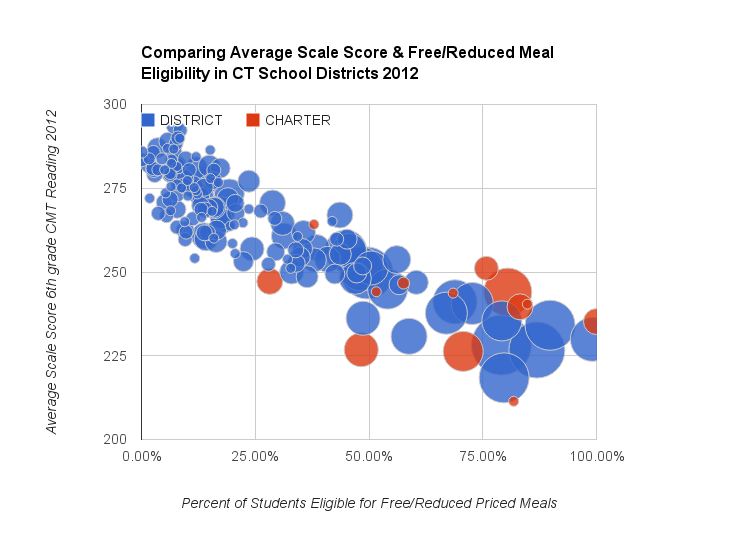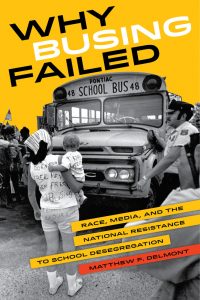“If the emperor was a weak man, the sight of his mark would evoke laughter and contempt, but if he was a stern and powerful ruler, his mark would instill fear and obedience.”
The Lords of Discipline, Pat Conroy, p. 213.
In the book Lords of Discipline, based on the Citadel military college, the general offered his cadets words of advice at their ring ceremony: be the powerful ruler that instills obedience and fear, otherwise suffer defeat. When I first read the judge’s decision in the CCJEF v. Rell school funding case, it struck me as similarly militaristic. Judge Moukawsher, a lawyer and graduate of the Citadel military college, ruled that his problem with Connecticut public education was an issue of discipline, not necessarily a lack of resources. Rather than declaring a war on inequality or inadequacy, the judge declared war on a “slack system”. While news accounts called the judge’s decision an “overhaul”, the ruling was more of a directive to continue public education’s most regressive tendencies.
The valiant CCJEF argument against the State relied on a common-sense idea: every child has a right to a rich, well-rounded education for all children that is adequately funded by the State. Advocates and parents in towns and cities brought the case forward as a Constitutional challenge more than a decade ago believing that public education was inadequately funded, particularly in less wealthy towns and cities. Past court cases, such as the Horton case, argued that Connecticut’s method of funding schools mainly through local property taxes was unfair to towns and cities with a limited ability to pay for public schools. The CCJEF case made a different argument.
There were three parts of the CCJEF argument. First, Connecticut has broad goals for public education such as ensuring that kids become productive members of society and engaged citizens. Second, the State needs to provide adequate or enough funding to accomplish those goals. Third, funding must be equitably distributed, or the funds needed to reach those goals might differ from town to town because students might require more or less help to reach the same goals depending on where they live and other characteristics like poverty, town wealth, language status, and racial identification.
The CCJEF plaintiffs acknowledged that Connecticut’s current method of funding schools was progressive, but inadequate and increasingly inequitable. Over the last thirty years, Connecticut supplemented local education funds from property taxes with State funds in order to create a progressive funding system. That system eventually became called the “Educational Cost Sharing” (ECS) grant and it has produced a certain degree of equity in educational funding. (e.g. Less wealthy towns get more State funding; wealthier towns get less State funding). But the State was underfunding that ECS fund and increasingly favoring wealthier towns by never taking away funds. In some cases, wealthier towns got even more funding as poorer districts lost state funds, a point made painfully clear by the judge.
As a fight for resources towards these broad goals, the CCJEF paralleled past fights for the educational rights of Black and Latinx children, children living in poverty, bilingual children, as well as children with disabilities. However, these civil rights battles also included claims for greater control over the resources and type of education provided to Black and Latinx students. Neither the CCJEF plaintfiffs, the State, nor the judge deliberated these issues.
Still, after years of hearings and testimony that documented public schools without sufficient resources (and funding) to provide an education worth its name, the CCJEF finally had its days in court over the last year. This year’s legislative session might also feature some response to the judge’s orders.
Watch a video version of this lecture here.
Contrary to the argument presented by the CCJEF plaintiffs, the judge found that Connecticut already, “spends more than the bare minimum on schools” (Moukawsher, 2016, p.23). The judge dismissed evidence from teachers and parents that their schools lacked adequate resources as “anecdotal” (Moukawsher, 2016, p. 24). According to the judge’s reading of the law, as long as public school students got classrooms with desks, chairs, air to breathe, a teacher, textbooks, and a curriculum, the State had fulfilled most of its obligation to provide an equal educational opportunity. He concluded that, “there is no proof of a statewide problem caused by the state sending school districts too little money” (Moukawsher, 2016, p. 24). The CCJEF plaintiffs lost this major part of their argument. At that point, the judge could have stopped his ruling, but he went further.
Going further than the initial lawsuit required, the Judge redefined an adequate education to mean one that could be measured through “objective” tests in elementary and high school. When all kids passed standardized tests that would mean that there was a rational and adequate education. And if kids did not pass the tests, then they should not be able to just “pass” to the next grade. To that end, the judge ordered the State and its subordinates to “define” education by using “exit exams” for students to leave the 3rd, 8th, and 12th grade. Here, the battle turned against the plaintiffs. The judge outflanked the plaintiffs by conflating standardized testing with equal educational opportunity.
For the judge, the State spent enough money on schools, but the State failed to compel everybody to implement the basic goals of education: kids passing basic reading and math tests. He stated his reasoning here:
…the state must propose a definition of what it means to have an elementary school education that is rationally and primarily related to developing basic literacy and numeracy skills needed for secondary school. No definition without force behind it can be rational, especially since the state would already say that is has amply laid out what elementary schools should achieve by adopting common core standards. Here the difference between a definition and a constitutionally adequate definition is that the former may have no real consequence while the latter requires substantial consequences. (Moukawsher, 2016, p. 59-60)
For the judge, third grade and high school students in the State’s resource-poor cities could not read at the “basic” level because their basic training had failed. Education, like the military, requires authorities to provide orders to their subordinates, who must follow. Although the state already has content standards and standardized tests connected to graduation requirements, teacher evaluations, school ratings, and so on, the judge believed that these tools were not wielded with sufficient authority and discipline by the State. If kids were not passing basic standardized tests, then somebody must suffer negative consequences. As the judge stated, “There is no room for a slack system to support cities like Bridgeport” (Moukawsher, 2016, 37). Poor student test results must mean somebody is slacking off and should be removed, fired, or dismissed. For the court, the educational system would only be rational and adequate when the State removed the weakest links, or the people and funding that don’t raise test results. This sweeping social analysis of Connecticut’s education system came as a surprise to those that have experienced the blunt force of the No Child Left Behind Act or Race to The Top, or other educational reforms that do, in fact, target various people to punish.
This vision for an educational system was Spartan and contradictory. It hinged on ranking kids, teachers, schools, and districts, then removing the weakest links. In the case of special education, the judge argued that, “school officials never consider the possibility that the education appropriate for some students may be extremely limited because they are too profoundly disabled to get any benefit from elementary or secondary school education” (Moukawsher, 2016, p. 76). Presumably, money could be saved by cutting services for these students with disabilities to save the funds for the kids that “can learn”.
Somebody should be punished when “objective” tests showed that kids could not read at basic level. Only when kids passed tests and moved onto the next grade or graduation, then they could be said to have an “adequate” education. If they didn’t pass, then they couldn’t move forward. Showing a misunderstanding of standardized test results, the judge did not see much value in measures in which everybody could pass. He stated, “An inflated teacher evaluation system, like a graduation or graduation system where everyone succeeds, is virtually useless (Moukawsher, 2016, p. 63).” Useful tests and standards rate people and some people must fail by design. But the judge did not take up the question of what happens when kids and adults are punished for never passing tests and evaluations that fail some people by design. As Wendy Lecker and other lawyers suggested, this ruling emboldened past and current corporate education reform initiatives. Rather than an overhaul of education, the judge ordered schools to escalate their most regressive tendencies such as testing, sorting people, removing “weak” links, and punishing non-conformists.
In terms of educational leadership, the judge wanted public schools to be more “tightly coupled”. In other words, schools must pick a goal, measure the goal, meet the goal or suffer consequences. It either did not matter or did not occur to the judge that schools might require “loose coupling”, or a set of broad goals implemented with a different type of leadership and management given the complexity of American schooling (Weick, 1976; Meyer and Rowan, 1977).
A positive aspect of the judge’s order for the plaintiffs was that it allowed the State to provide more funding for schools if schools wished to provide these opportunities, but it was not required to spend any more because it was already funding the bare minimum it needed. Redistribution of state funds was also possible, but not required under this ruling. Sadly, the things we find help kids in schools such as support professionals, arts, music, health, computers, recess, and fun were just irrational “extras” for this judge (Moukawsher, 2016, p. 40). Rich districts might be able to offer these opportunities through their own local funding, but the State is not required to fund these opportunities in middle and working class schools where the majority of Black and Latinx students reside.
To be sure, the judge acknowledged that economic status, targeted school funding, and other factors can influence academic success. Connecticut only needed to make a funding formula, connect it to test results and evaluations, then stick to it and deliver punishments for not complying and performing. By radically redefining adequacy to “rational” discipline as measured by test scores, the ruling was a regressive departure from the idea of a rich, well-rounded public education for children, particularly for Black, Latinx, and children of all ethnic groups living in poverty.
With his Citadel ring on his finger as he read the ruling from the bench, the Judge told the State of Connecticut, be the stern and powerful school emperor that instills fear and obedience through tests and punishments. Only that would be a “rational, substantial, and verifiable” public education, even if it’s not adequately or equitably funded by the State.
Note: The State of Connecticut (defendants) and CCJEF (plaintiffs) have appealed the decisions and the Supreme Court has allowed that appeal to move forward.




